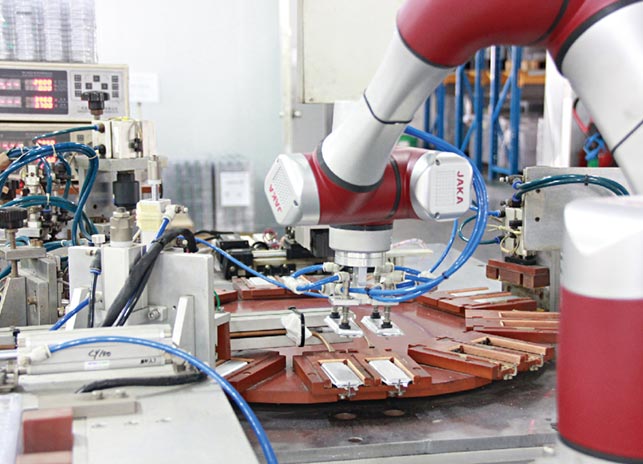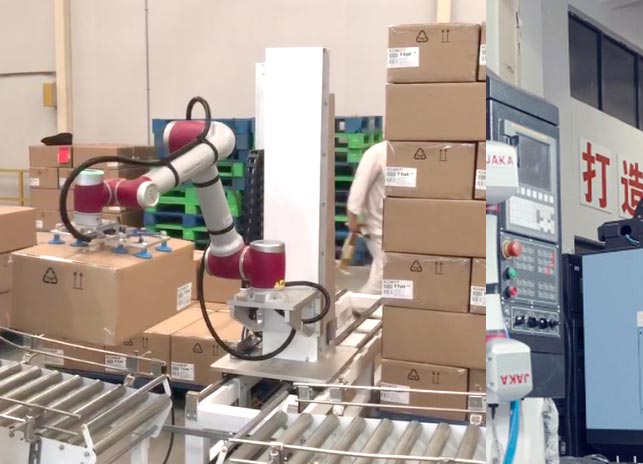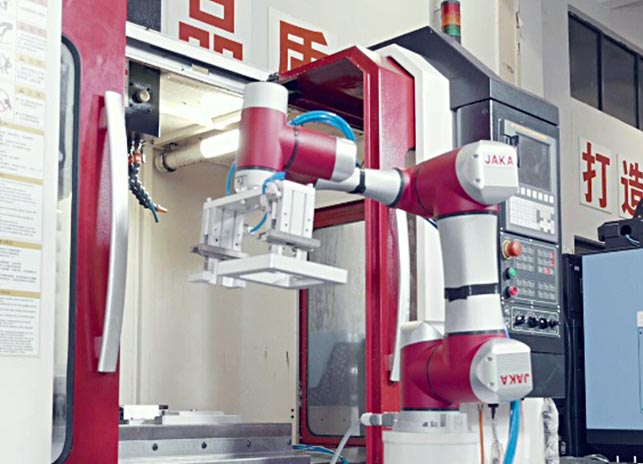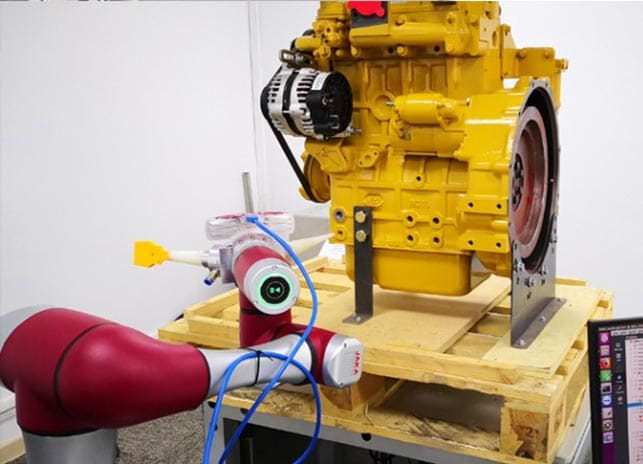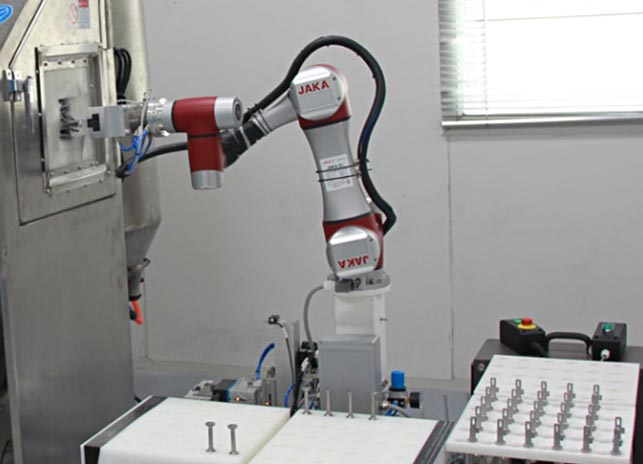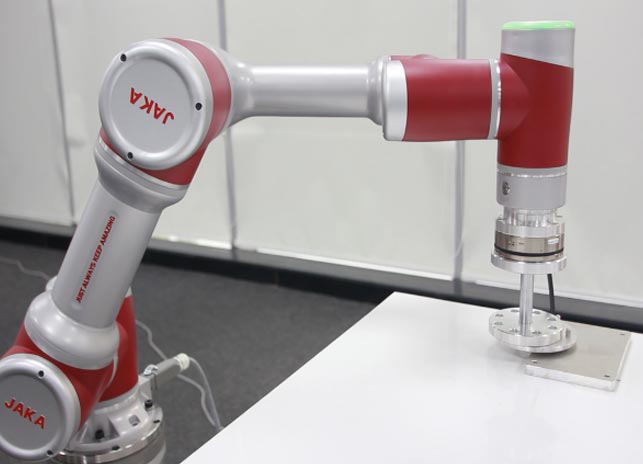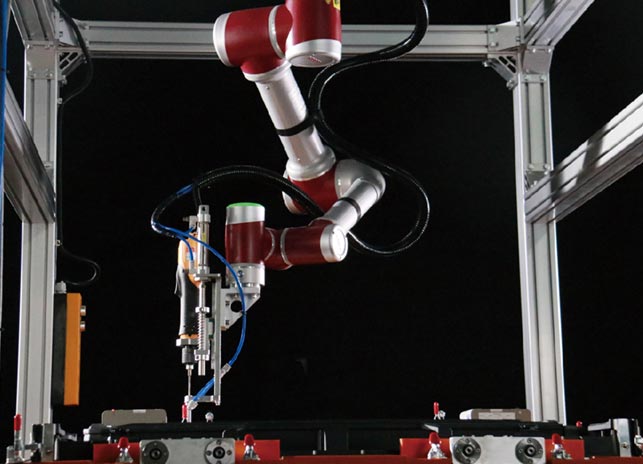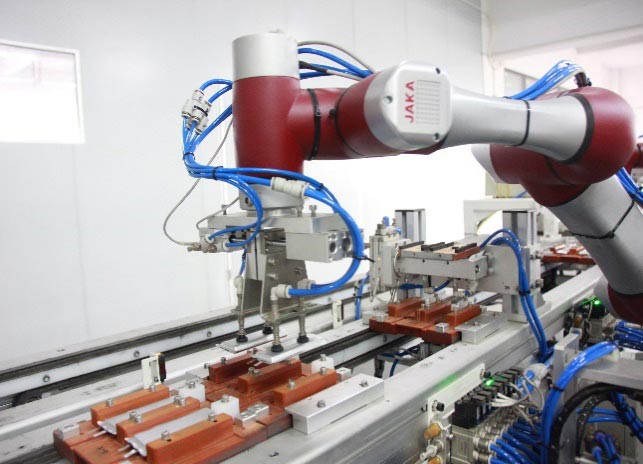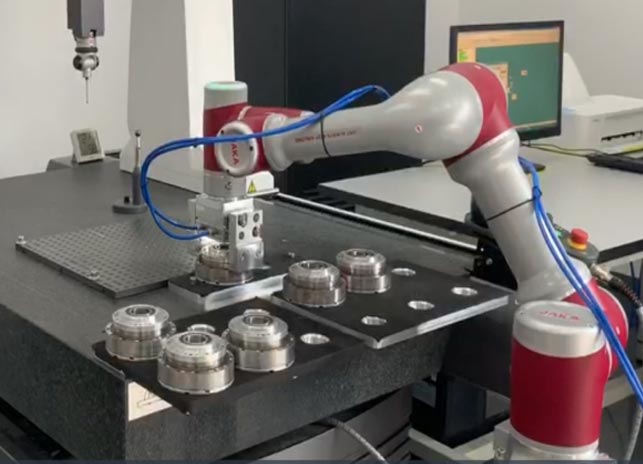Why a collaborative robot?
The cobot is a robot designed specifically to work in an environment where humans operate ensuring their safety and physical integrity. The cobot can interact with the operator to perform repetitive, low-value-added tasks such as positioning or moving parts. The particularity of some cobots is to have been designed to be programmed easily, thanks to their simplified interface or directly by manipulating the cobot, the JAKA range is the perfect example.
The result is lower speeds due to its design to ensure operator safety than a traditional industrial robot. So the cobot will be perfectly adapted, as long as we want a collaboration or a co-activity between man and machine on the same workstation and you want to optimize the surface on the ground.
This means that the cobot will find, especially its place on small series with low or medium cadences, to introduce more flexibility on robotic tasks.
Key benefits of cobots
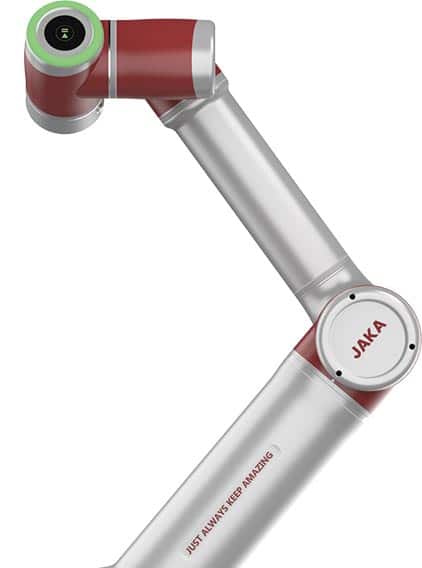
WCS SOLUTIONS FOR HIGH-TECH WELDING
Discover Cobots-Solutions' innovative welding solutions, designed for small and medium series.
We have brought together the best of collaborative robotics, MIG/MAG generator and welding tables for efficient and high-quality production.

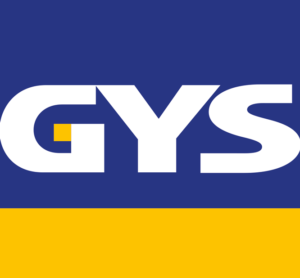

Our JAKA cobot is easy to use with its intuitive graphical programming, allowing a quick start.
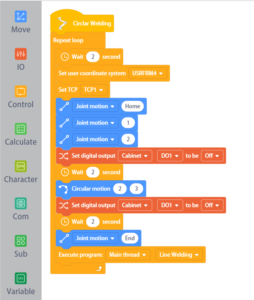
You remain in control thanks to the interface developed by GYS, controlling the weld seams and communicating with the robot.
The WCS solutions are developed with the GYS NEOPULSE 320 C three-phase pulsed MIG/MAG generator, which offers:
- Digital performance and precision with its 4-driven roller wire feed system.
- Exceptional synergic curves.
- ARC Dynamics for Superior Welding Quality on all types of alloys.
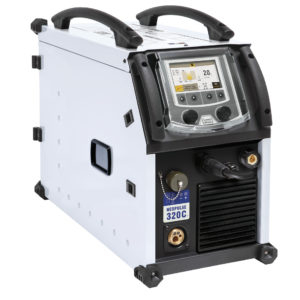

THE ADVANTAGES OF WCS WELDING SOLUTIONS
With its speed of installation and ease of use, WCS welding solutions allow you to reduce your production costs, while improving quality. The welding on Monday morning will be the same as that on Friday evening.
After a One-day training, your welders will be able to create new programs to enrich your parts catalog.
The realization of the weld bead can be carried out in a very simple way, by manually bringing the robot to the different points to define the right trajectory, whether they are straight beads, or arcs, or even more complex trajectories. JAKA robots have a RECORD fashion, which allows you to record any trajectory made by simply moving the torch to be welded. These functions are accessible from a simple touch pad. Before starting, the operator can simulate the welding process in order to identify and correct any areas for improvement.
TWO VERSIONS ACCORDING TO YOUR NEEDS
WCS Zu12 – 320C – PE 8.7
For small and medium-sized parts with a Siegmund 1200 X 800 Professional Extreme 8.7 Welding table, delivered with all its equipment to start in good conditions. The robot is the JAKA Zu 12, the best-selling model in the range with has radius of action of 1327 mm and a repeatability of ±0.03 mm, it ensures the welding of many parts. JAKA robots are widely proven in the industry, with an MTBF of 80,000 h.
The GYS MIG/MAG NEOPULSE 320 C welding machine complete with the SMART communication module (SAM-1) and a Binzel MIG Grip torch.
WCS Pro16S – 320C – SP 750
For medium and larger parts with a Siegmund 2000 X 1000 Professional 750 Welding table, delivered with standard legs and Siegmund accessories for welding table.
The robot chosen for this solution is the JAKA Pro 16S, the latest addition to the range. With a radius of action of 1713 mm and an IP68 protection rating, you can consider making your welds in all conditions, even the worst. Because of its size and weight the JAKA Pro16 is here in version S, it has an additional effort sensor to make its manual handling totally flexible and easy.
The GYS MIG/MAG NEOPULSE 320 C welding machine complete with the SMART communication module (SAM-1) and a Binzel MIG Grip torch.
CE certification in accordance with the European directive, WCS Zu12 and WCS Pro16S solutions meet the objectives of the European directive, which requires, among other things, to protect operators from risks and in particular from UV radiation, heat, electrification.
The application of arc welding requires the addition of safety equipment to meet this European directive.
Case studies
CAS 1: Improving the efficiency of the lithium battery industry
Case: A manufacturer of lithium batteries
Building a smart factory to reduce cost problems and low productivity
Challenges:
Repetitive work such as control, bonding and welding requires high precision. Improve production efficiency and maintain industry competitiveness.
Solutions:
Increase productivity with flexible solutions on production lines.
Cobots are flexible and compact, allowing them to work in confined spaces.
Using vision to precisely weld materials, especially positive and negative electrodes
Flexible deployment and rapid transformation of production lines
Cobots are flexible and compact, allowing them to work in confined spaces.
Achievements:
A collaborative robot can free up 2 to 3 operators from the most repetitive tasks;
The cobot operates 24/7, which improves the efficiency of the production line and increases production;
- Significant improvement in performance;
- A production plant 4.0.
CAS 2: Improve production by 30%
Case: A probiotic bag manufacturing company
To find fast and efficient handling equipment, connecting existing items seamlessly.
Challenges:
The company wants a speed higher than 3.5 seconds for a single move; The shape of the seized product should be easy to change; The space of existing production lines is very limited.
Solutions:
Achieving high-speed entry by a JAKA® Zu 7.
Add a JAKA® Zu to existing equipment with an efficient connection.
Achievements:
Efficient product entry in a single action of approximately 3.2 seconds, exceeding customer expectations, and a 30% reduction in time compared to the original structure.
Replace the complex handling structure with a JAKA® Zu, saving 20% of the total cost of the equipment.
CAS 3: Flexible production, ensuring high quality and efficiency
Case: Metal parts surface
sanding Find ways to replace traditional robotic solutions to optimize the sandblasting process
Challenges:
During the production process, the sand projection process was unstable and the number of defective products increased.
The safety and noise experienced by employees, as well as the risk of occupational diseases caused by dust, had to be controlled.
Solutions:
- The JAKA® Zu 7 can make a flexible grip and 360-degree rotational treatment to ensure the stability of the product process.
- With the JAKA® Zu 7 loading and unloading are fully automatic, guaranteeing the quality and efficiency of production.
Achievements:
- Automatic control of the robot makes the process stable and reliable;
- Occupational hazards for operators are eliminated, running 24/7 with high efficiency of robot work.
CAS 4: Achieving an automatic sanding process, under 24/7 working conditions
Case: Medical Device Manufacturer
Performing an automatic sandblasting process and improving the company's competitiveness
Challenges:
- Produced in small batches with several varieties and frequent changes
- The manual work process is unstable; with a lot of defective products
- The problem of noise and dust in this process are important, which increases the risk of occupational diseases
Solutions :
The JAKA® Zu 7 is deployed in the sanding process, optimizing the cycle, doing the work 24/7, and ensuring the handling and inspection of the products.
- The JAKA Zu 7 can be deployed directly in the existing production line without a protective barrier
- A device corresponds to a sanding machine, and no major changes are required to the sanding machine
Achievements:
Reach the existing production line cycle and optimize the process.
- The default rate has decreased considerably
- Eliminate the risk of occupational diseases caused by noise and dust
- To do a job 24 hours a day, 7 days a week, by improving the use of equipment upstream and downstream
CAS 5: Make 800 to 1200 parts for the manufacture of moulds per day
Case: A supplier of automotive metal parts
Improve tasks such as auto-recovery, soaking coating, excess coating, unloading, etc.
Challenges:
- Staff have limited experience in automation and programming
- Increased demand for production capacity in the face of recruitment problems
- The work of the operators is monotonous and repetitive, with a high intensity
- The workshops are high temperature and the manufacturing cycles fast
- The process is complex and the quality must be high. It is necessary to meet the moulding quality standards of car companies
Solutions:
Increased productivity by integrating the JAKA® Zu 7 system next to the sand core machine.
- The JAKA® Zu 7 is easy to operate, program and low maintenance cost
- The JAKA® Zu 7 can reproduce all movements to meet user requests
Achievements:
- A JAKA® Zu 7 can meet the production requirements of 800 pieces of sand at 1200 per day and automatic control makes the process stable and reliable
- The company's raw sand core machine required two people to operate, one person to pick up parts and do debawling, and the other person for soaking coating and palletization operations. Now, production capacity can be doubled, while greatly improving quality

